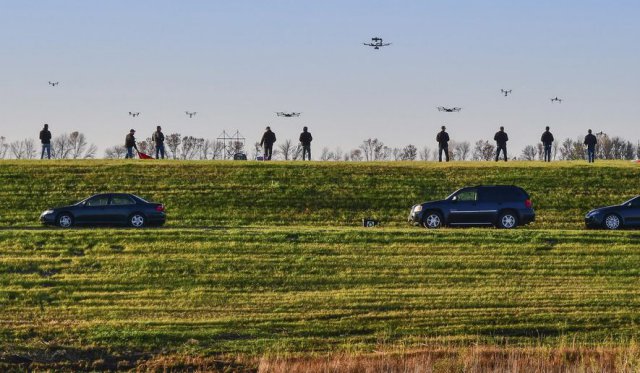The Aircraft Owners and Pilots Association (AOPA) has welcomed 55 new members over the past month, after announcing in February the organization would open up to include drone pilots.
Kathleen Swain, the association’s senior director of unmanned aircraft systems, said the interest in their new program has attracted traditional manned aviators and remote pilots alike among the association’s 350,000-member base.
“Since we’ve launched the drone membership back on February 21 — almost a month to the date — we have currently 55 new drone members, close to 1,000 AOPA members who have opted in for drone membership content and over 3,000 that have subscribed to AOPA’s newsletter for drones, that also goes out to public,” she said.
What’s most striking is not the differences between the two groups of pilots, but their similarities, Ms. Swain said.
“Even if I’m siting in the aircraft or standing on the ground controlling the aircraft, I can do a lot of the same missions,” she said. “I’ve flown humanitarian missions as a manned pilot and a drone pilot.”
Ms. Swain, who recounts that her first flying experiences were operating remote-controlled aircrafts as a child, is a certified commercial pilot who had corporate, instructional and commercial piloting experience before transitioning to UAV planning and piloting in 2010.
“When we welcomed the drone community a month ago, one of our biggest things here at AOPA is that continuous freedom to fly,” she said. “Now we’re not just focusing on manned pilots, it’s the unmanned pilots as well — keeping the airspace for general aviation as a whole.”
The growth of the AOPA to include drone pilots in its services — which includes insurance, legal services, safety and education, news and media — follows last year’s move by the FAA to introduce commercial license for UAV pilots. Hobbyists can operate without a certificate.
According to FAA estimates, drone purchases for both hobbyists and commercial use are expected to increase from 2.5 million in 2016 to 7 million in 2020. Growing commercial areas for drones include humanitarian efforts, search and rescue, data gathering, TV, media and film, to name a few.
Swain herself helped on a fact-finding and documentation mission after the deadly 2014 mudslide in Oso, Washington, which killed 44 people.
“It was painful to see, and to watch great technology sit on the sidelines because of regulation, or lack thereof,” Ms. Swain said in an interview with AOPA online last month.
This experience helped inform her mission in bringing drone pilots into the fold of the organization.
Moving forward, one of the most important considerations for remote pilots and drones is keeping federal regulations and safety guidelines up to speed with advances in technology, Ms. Swain said.
“Innovation is so profound in this area — people are finding new business cases for drones, humanitarian search and rescue, there is a plethora of business verticals and uses for drones that will continue to evolve and will continue to evolve faster as regulatory continues to catch up,” she said.
Photo: In this Oct. 9, 2016 photo, drone pilots for SkySkopes gather at a practice airfield – Brandi Jewett/SkySkopes Academy via APSource: The Washington Times

